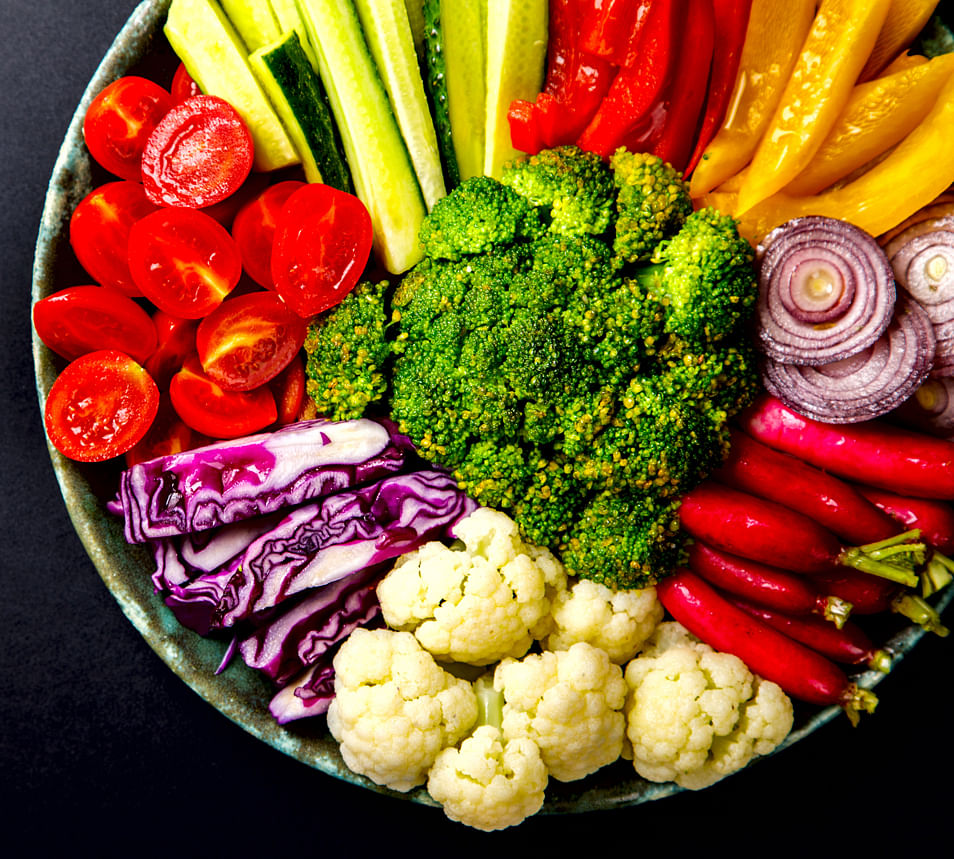
What’s for lunch today? Does it include crunchy grilled potatoes or any of its fried forms? If your answer is in the affirmative then please think twice before relishing this tasty vegetable. Though a single large potato contains seven grams of fibre and an equal amount of protein, when fried in oil, this delicious vegetable can turn out to be deadly for our health.

In accordance with the Harvard School of Public Health, deep-fried potatoes can immensely add to weight gain, heart attacks or diabetes. According to The American Journal of Clinical Nutrition, people who ate fried potatoes twice a week saw an increased risk of death. There are ways to eat them healthy.
You can also find substitutes like zucchini, taro root and turnip for them.
Zucchini
While potato contributes 168 calories in a 173 gm serving, zucchini only contributes 29 calories for the same serving. One will only consume 5.44 gm of carbohydrates in zucchini while potato has 37 gm of it. Though zucchini might taste bland when eaten raw, by using herbs like basil, oregano, garlic, etc., one can give it an exotic flavour. To keep it simple, just sprinkle some salt, chilli powder and pepper. Always choose fresh, spotless and not oversized ones. If the skin is wrinkled, it might not be fresh.
Zucchini hummus delight
Blend a zucchini (medium-sized) which is cut into slices, three garlic pods, a handful of chickpeas (soaked overnight, boiled and rinsed), 2 spoons of lemon juice and the same quantity of tahini (a paste from sesame seeds), olive oil (as per your requirement), salt and 3 green chillies in a food processor. Blend ingredients to a smooth paste. A delicious hummus is ready in minutes.
Taro root
Known as the potato of the tropics, this root vegetable may seem to have more carbs compared to potatoes. But on a closer look, this vegetable is a blessing for diabetic patients because its resistant starch and fibre does the trick. These are the form of carbohydrates that cannot be digested easily, which implies that the sugars present in them cannot be easily absorbed and hence the glycaemic index won’t shoot up.
Ranging from bland to a nutty flavour depending on its variety, this root veggie is a great replacement when cooked with spicy and flavourful ingredients. Look out for ones that are firm, blemish-less, wrinkle- free and without mould. Store it in a cool and dry place.
Spicy masala arbi
Wash and boil the taro root (6 in number) in a pressure pan and make sure it does not turn mushy. Peel and cut them into slices. Mix them up with chilli powder (2 tsp), masala powder (2 tsp), ginger garlic paste (1/2 tsp), turmeric powder (1/4 tsp), and salt as per taste and fry them with little oil in a pan on a low flame till the veggie becomes crunchy and crisp. A delicious curry is ready to be served with rice.
Turnip
A 100 gm serving of ready-to-eat mashed potatoes contains 13 gm total carbohydrates which includes 1.9 gm of dietary fibre and 1.8 gm of sugar while the same serving of boiled turnips contains 5.1 gm of total carbohydrates which includes 2 gm of dietary fibre and 3 gm of sugar. The flavour of mashed turnips can be compared to that of potatoes by mixing it with ginger garlic paste, chilli powder, and other spicy ingredients. Buy turnips which are small in size and have a bright purple underside. Turnips can be refrigerated for four to five months.
Spicy shalgum curry
Wash and cut the turnips (about two) into small pieces. Chop one onion bulb and three tomatoes. Season it with mustard seeds and little urad dal in little oil. Add the cut onions and tomatoes with a little asofoetida. Fry them well and then add the turnips. Add salt, chilli powder and garam masala as per your taste. Also, add one tsp of ginger garlic paste and a little turmeric powder. Keeping the curry spicy will make it taste good. Keep sautéing the ingredients until the turnips are cooked well. Delicious spicy shalgum curry is ready in a jiffy.
Cauliflower
In accordance with the American Diabetes Association, cauliflower is considered to be a non-starchy vegetable. As per the USDA norms, 1 cup of cauliflower has just 27 calories which is very low when compared to potatoes. It also has a substantial amount of vitamins and minerals, making it a good substitute for potatoes.
It is best to select the ones which have a bright creamy colour and tightly packed florets. To store them damp-free ensure that it is wrapped in a loose cloth, covered and kept in a way that the florets are facing upwards in the refrigerator
Cauliflower masala gravy
Grind together five medium-sized tomatoes, three green chillies, two garlic pods, a small piece of ginger and one small-sized onion and keep it aside. Bring salt water to a boil in a large vessel. Remove the leaves of the flower and immerse the vegetable in a vessel in such a way that the florets are covered with salt water, to get rid of worms, if any. In a pan add two spoons of ghee and season with aniseeds. Add ingredients to the pan and let it simmer for a while with a closed lid. Cut the pre-boiled vegetable into small florets and add it to the pan. Mix the ingredients well, and add salt, garam masala, turmeric powder and chilli powder to it as per your taste. Let the gravy simmer in low flame for about five minutes. Add little sugar and a dash of lime if required. Hot and tasty masala gravy is ready to be served with hot rice or rotis.
Carrots
Carrots are winners in carbohydrate content, when compared to potatoes. Boiled carrots with salt added to them contain 8.2 gm of carbohydrate with 3 gm of dietary fibre and 3.5 gm of sugar content per 100 gm serving. A similar serving of potato contains 13 gm of carbohydrate with 1.9 gm of dietary fibre and 1.8 gm of sugar. Carrots are loaded with Vitamin A. Volatile compounds called terpenoids determine the taste of carrot; when present in high concentration, it makes the carrots bitter whereas low levels of it make the carrots taste sweet. When cooked, the bitterness of the carrots may vanish giving way to sweetness, as the cooking process breaks down the terpenoids. The top of the carrot that attaches to the stem must be orange rather than green. Underripe carrots are the ones that may taste bitter and soapy.